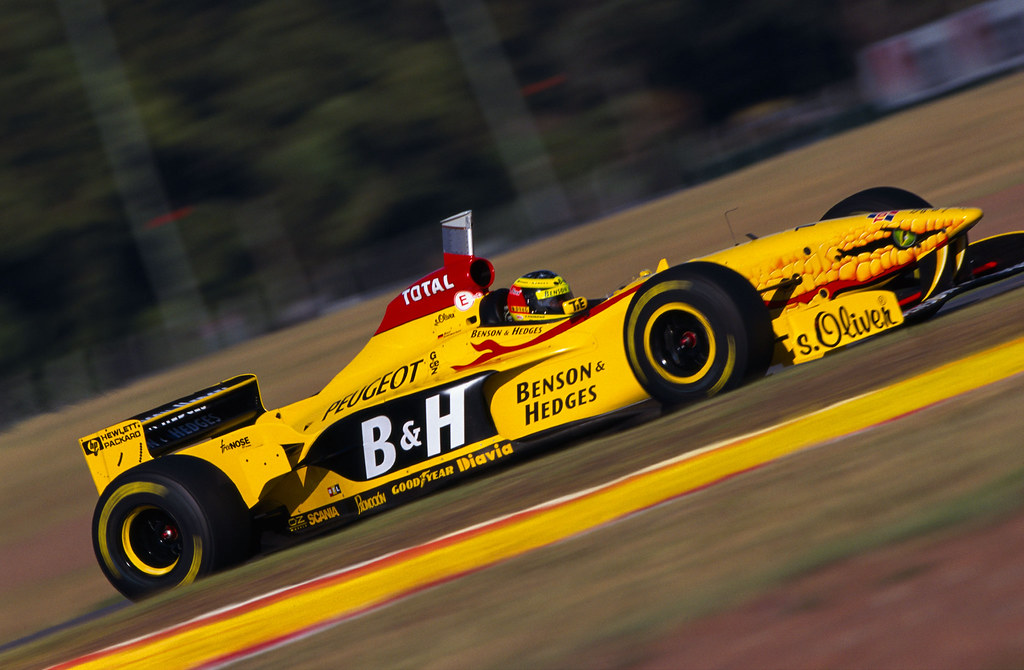The Autódromo Oscar y Juan Gálvez, located in Buenos Aires, Argentina, is one of the most legendary racetracks in the world, and was home to the F1 Argentine Grand Prix across many years. Constructed in 1952 under President Juan Perón, the track has hosted numerous epic F1 and motorcycle Grand Prix races and continues to be an important part of the South American racing scene.
Early History and Construction
Racing first came to Argentina in the 1930s with sportscar events held at tracks like Costanera and Retiro. By 1947, the popular “Temporada” series was drawing top drivers from Europe and showcasing talents like Juan Manuel Fangio and José Froilán González. As the popularity of racing grew, construction began on a dedicated, purpose-built racetrack in Buenos Aires. The Autódromo 17 de Octubre, named for Loyalty Day, opened in 1952.
Multiple Configurations
One of the most unique aspects of the Autódromo Oscar y Juan Gálvez was its flexibility. Over the years, more than 15 different track configurations were used for various events. This allowed the facility to host Grand Prix motorcycles, sports cars, touring cars, trucks, and more. The main layouts included:
- No. 2 Circuit: A 4 km clockwise layout used for F1 from 1953-1960.
- No. 9 Circuit: A twistier, 3.3 km course run from 1971-1973 F1 races.
- No. 15 Circuit: A fast, wide-open 5.9 km version with long straights around a lake used in F1 from 1974-1981.
- No. 6 Circuit: A tighter, more technical track for F1 and bikes from the mid-1990s onward.
F1 at Buenos Aires
The Autódromo Oscar y Juan Gálvez hosted F1 World Championship grands prix from 1953 to 1998 under different names as political regimes changed. During F1’s early years, Argentinian F1 drivers like Fangio and González gave the rowdy local crowds plenty to cheer. Tragedy struck the 1953 race when accidents caused multiple spectator fatalities. But the fast, dangerous nature of the track also contributed to legendary winning drives.
Fangio’s Domination
Fangio won the first of his five career home victories in 1954, a feat unmatched in Argentine Grand Prix history. He nabbed three more in a row despite horrible burns to his leg in the 1955 race. Fangio called his 1956 win from last place “one of my greatest victories.” After his retirement, sporadic races followed until regular Argentine GPs returned in the early 1970s.
Emerson Fittipaldi wins in 1973 and 1975 driving for Lotus.
In the late 1970s, home favorite Carlos Reutemann was the center of attention. Crowds packed the grandstands to cheer on the local hero and other famous names like Niki Lauda and Mario Andretti. The ultra-fast No. 15 circuit also hosted some of F1’s most thrilling slipstreaming battles from 1974-1981. Nelson Piquet and Alan Jones duked it out in 1980, but the track surface was dangerously disintegrating. But the most sensation was the double win for Emerson Fitipaldi in Lotus, during peak of the turbo era in F1.
Decline and Renovations
After a 15-year absence, Formula One returned to a revamped Autódromo in 1995 using the twistier No. 6 layout. But although state-of-the-art facilities replaced the crumbling circuit of the past, many felt the tight turns of the new configuration were ill-suited to F1 machinery. Michael Schumacher claimed Ferrari’s last Argentine GP win in 1998 before funding dried up once more.

Motorcycle Racing at Buenos Aires
The Autódromo also played host to motorcycle Grand Prix racing from 1961-1999. Just like in F1, Argentine fans passionately supported local riders like Santiago Herrero and Claudio Lusuardi. The Formula 750 and 500cc classes thrilled spectators with daring displays of speed and lean angle around the flat-out kinks and tight corners.
Safety Impacts
As with F1, tragedy also struck two-wheeled competition in Buenos Aires. Herrero died from injuries sustained in a violent highside crash during practice for the 1970 250cc race. Track safety limitations likely contributed to the frequency of accidents and fatalities. These factors, along with Argentina’s economic volatility, ultimately ended its consistent run on the MotoGP calendar after nearly 40 years.
Sports Cars and Touring Cars on Autódromo Oscar y Juan Gálvez
Alongside grand prix racing, the Autódromo also hosted sports car and sedan events for many decades. The 1000 Kilometers of Buenos Aires first ran in 1954, pairing the main circuit with public roads in a 24 Hour Le Mans-style test of endurance. Alfa Romeos, Ferraris, Maseratis, Mercedes, and Porsches battled around a track lined with straw bales rather than protective barriers at points.
National touring car series like Turismo Carretera and TC2000 frequently included Autódromo races, crowning Argentine driving champions and continuing the legacy of famous events like the Temporada series. More recently, the track has held international touring car races like the World Touring Car Championship and Stock Car Brasil.
modern era developments
Although Formula One seems unlikely to return in the near future, the Autódromo continues working to meet present-day safety and competitor standards. Extensive upgrades were completed in 2008 in the run-up to Argentina’s 2010 bid for a round of the MotoGP world championship. And major races like the Buenos Aires 200km (TC2000) and 1000km (Turismo Carretera) events still draw substantial crowds.
Autódromo Oscar y Juan Gálvez Legacy
In many ways, the history of racing in Argentina can be told through the story of the Autódromo Oscar y Juan Gálvez. Generations of local heroes thrilled fans with daring displays of speed around its changing layouts. Some even became international racing icons after getting their start at Buenos Aires home races.
But for all the triumphant moments, heartbreak also struck frequently. Track conditions and competitiveness too often had dangerous consequences as safety standards modernized elsewhere. Politics also negatively impacted operations on occasion. Nevertheless, the Autódromo remains an important part of Argentine culture today.
Only time will tell when or whether the facility can meet standards for another crack at hosting world championship-level racing. But regardless of the future, the epic race history forged there will never be forgotten.


14 Comments